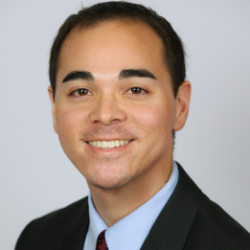
In light of recent discussions about improving the diversity of the dermatology physician workforce, it is worth considering whether establishing an independent resident Match process could be a productive strategy for increasing minority representation within our specialty.
Applying to a competitive specialty like dermatology is expensive and systemically disadvantages minority applicants, many of whom also come from low-income backgrounds. The cost per applicant per Match cycle is estimated to be between $9,000 and $12,000 when accounting for application costs, away rotations, and travel for interviews.
In a recent AAMC survey, students from low-income backgrounds reported that they had abstained from applying to geographically distant programs, scheduling away rotations, and/or attending certain interviews during their Match cycle because of cost. Although grants for applications costs are available, fewer than 5% of applicants reported receiving financial support.
Data from the AAMC also show that Black or African American applicants apply to the fewest number of dermatology programs (an average 34.4 programs in 2018), compared to Asian (51.6 programs) and White (58.9 programs) applicants.
In a competitive Match like dermatology, the number of attended interviews and audition rotations are among the most important factors associated with a successful match. Lacking the wherewithal to fully participate in the match process can be detrimental.
Why Is It Hard to Fully Participate in the Match Process?
An area of rising costs is the burgeoning number of applications submitted per applicant. This is a symptom of medical students struggling to make informed decisions about the appropriate number of applications to submit. It is also symptomatic of the Match system that encourages casting a wide net.
There has been a significant uptick (40 applications in 2001 to 90 in 2019) in application submissions per applicant over the past 18 years. Yet, the NRMP reported rank-order-list has been consistently nine for successful applicants, and four for unmatched applicants. This suggests that increased spending on more applications does not lead to more interview offers.
For programs, the sheer number of applications received per open position invites the practice of screening out applicants based on the USMLE step 1 exam score, despite its controversial relevance to future resident performance.
The 2018 NRMP Program Director Survey reported that programs, on average, received 485 applications, while extending only 38 interview invitations for four open positions. In prior years, up to nine of every 10 program directors surveyed reported having a target score for the USMLE step 1. If applicants scored below the target score, they would not be considered for an interview.
Using the USMLE step 1 score to screen out applications may negatively impact the recruitment of minority applicants, a group that historically has scored lower on standardized exams.
An Efficient, Cost-Saving Solution
Creating an independent, dermatology-driven resident Match with an application limit could reign in the application excess, help reduce the application costs, and could increase minority representation within dermatology.
Using the current cost structure of the NRMP, applying to 20 versus 90 programs is a difference of $2100. The savings from applying to fewer programs might be better used toward financing away rotations and/or travel costs for interviews, both of which are more concrete means for increasing an applicant’s chances of matching.
Building a new Match platform could also provide opportunities for time- and cost-saving innovations, such as regional coordination of interview dates, and virtual or online interviews.
Capping the number of applications could create a more equitable evaluation process of applicants’ fitness for our training programs. By substantially reducing the number of applications that programs must initially review, quantitative screening metrics — for the purpose of paring down applications — becomes less of a necessity. Additionally, it would encourage more comprehensive evaluations and mitigate the influence of hidden prejudices in applicant selection.
Capping the number of applications might also encourage applicants to better inform themselves about prospective programs. Instead of indiscriminately sending out applications, applicants may be incentivized to apply with more precision and understanding about a program’s advantages and limitations, leading to more insightful evaluations during interviews.
Building an independent Match process could be an opportunity to rethink professional priorities for applicants. If our specialty supports and desires diversity in the workforce, we should prioritize such questions about applicant diversity at the front and center of our application.
It is true that the logistics of creating a new Match process would be rife with practical and legal questions.
What are the legal barriers to seceding from the NRMP?
Who would build the platform, and who would control its contents?
How would our specialty reach consensus about application priorities?
How would fewer applications per applicant sustain the costs of a national resident Match process?
Would fewer applications per applicant disproportionately impact smaller training programs?
Would the rate of unmatched positions rise overall and leave programs scrambling for applicants?
Could the Match become more expensive for those students who are dual-applying into dermatology and to an NRMP-governed specialty?
These are difficult but necessary questions to ask. These are also reasons to be skeptical about restructuring the dermatology resident Match process. However, if we truly agree that diversity of all kinds is important to the future of our workforce, then establishing a dermatology-driven Match process will be a bold step in that direction.
Powell Perng is a current PGY-3 in dermatology at Johns Hopkins. He is interested in medical education and health policy.







